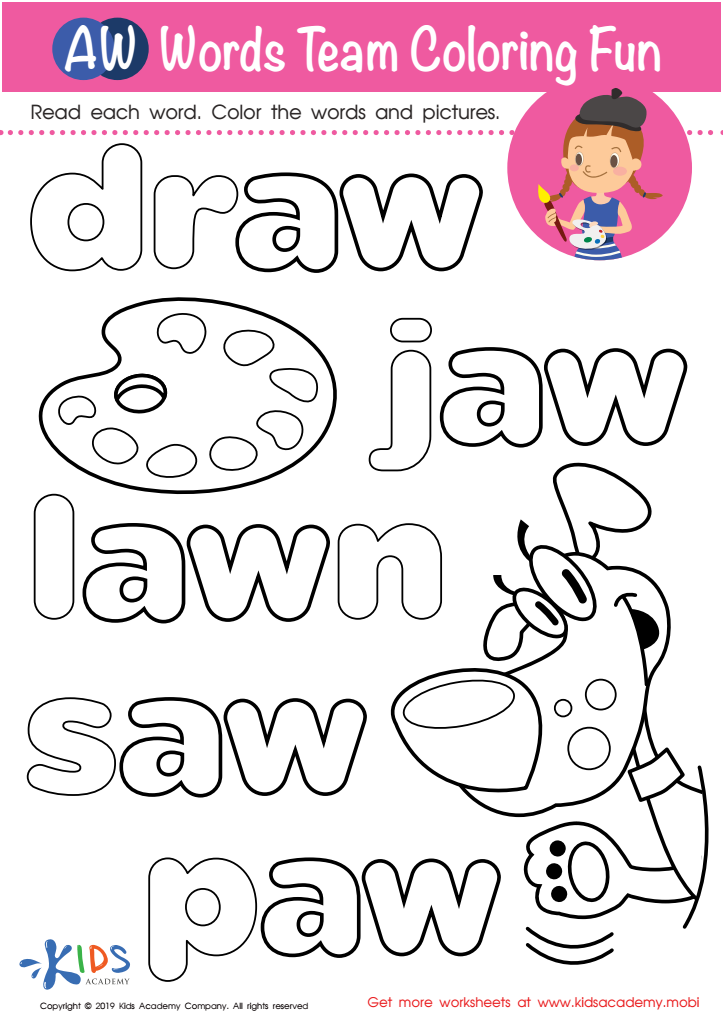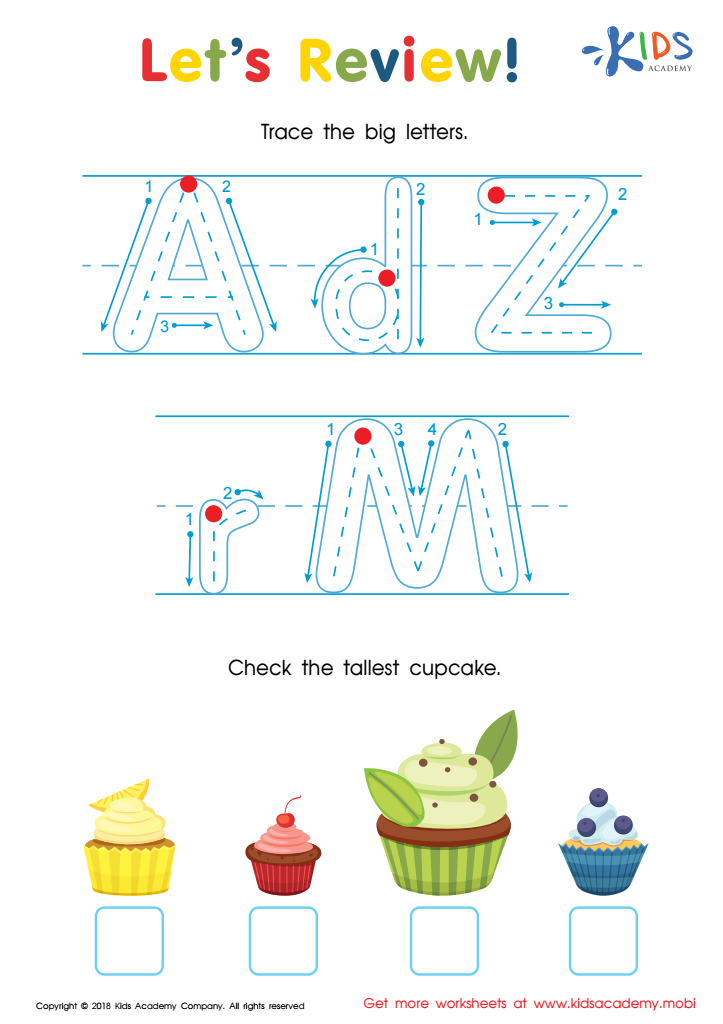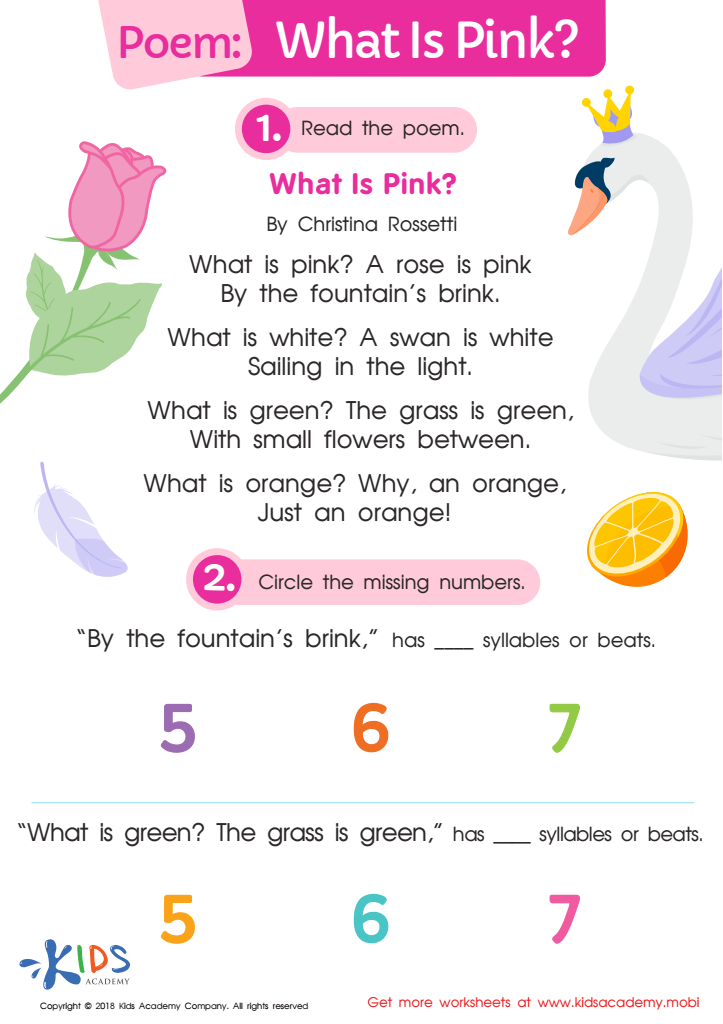Color Identification Normal Alphabet Worksheets for Ages 3-9
3 filtered results
-
From - To
Discover our engaging Color Identification Normal Alphabet Worksheets designed for children ages 3-9. These worksheets encourage early learners to develop essential color recognition skills while simultaneously learning the alphabet. Perfect for home or classroom use, the interactive activities promote creativity and critical thinking. Each worksheet features vibrant illustrations and prompts that inspire kids to identify colors in letters, words, and images. Children will love exploring their artistic side while enhancing their cognitive development. Foster a love for learning with these dynamic resources that blend fun and education seamlessly. Get started on the path to color and alphabet mastery today!


AW Words Team Coloring Fun Worksheet


Let's Review! Big Letters Worksheet


Poem: What Is Pink? Worksheet
Color identification and recognition of the normal alphabet are essential foundational skills for children ages 3-9. For parents and teachers, nurturing these abilities is crucial because they significantly influence cognitive development and literacy skills.
Understanding colors helps children categorize their environment, enhances their observational skills, and enriches their vocabulary. When children can identify and name colors, they gain tools for expression and creativity, enabling them to describe their feelings and surroundings more effectively.
Similarly, recognizing the alphabet is vital for language acquisition. Mastery of letter recognition is a precursor to reading and writing. Children who learn the alphabet early are more likely to develop strong literacy skills, facilitating communication and comprehension as they progress in school.
Moreover, both color and alphabet identification promote critical thinking and problem-solving skills. Activities involving colors and letters can be integrated into play, making learning enjoyable and interactive, which reinforces their understanding.
Ultimately, prioritizing these skills fosters children's confidence and independence, preparing them for the academic challenges ahead. By focusing on color identification and the normal alphabet, parents and teachers empower children with essential life skills they will rely on throughout their educational journey and beyond.

 Assign to My Students
Assign to My Students



















